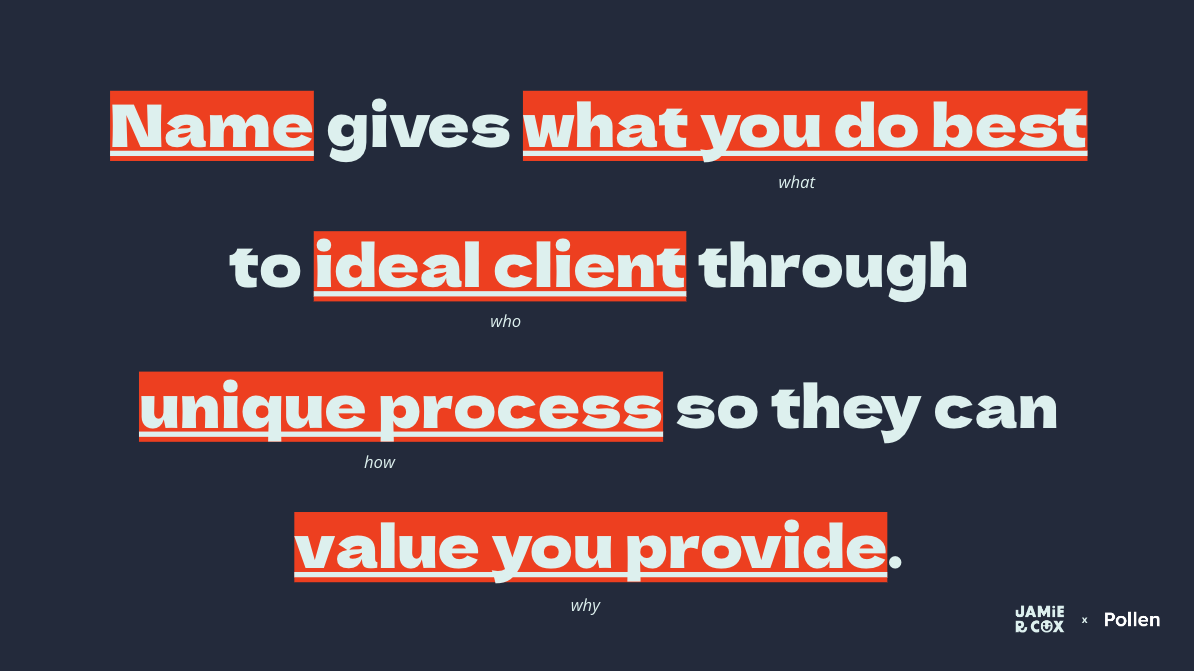Define Content Marketing Themes
If you want to use content marketing to raise awareness about your brand and your services, you need to decide what to say.
Enter your content pillars: the key themes you’ll use to define and direct your communication with your audience in different contexts across distinct platforms. These pillars support your key marketing messages—just like physical pillars hold up a bridge. They make up the foundation of your overall content strategy.
To do this, we’ll identify topics and themes most likely to resonate with your audience, and organize your content output into individual pillars.
First, identify content pillars or themes that summarize topics you want to tackle to help you zero in on specific ideas for individual pieces of content.
In traditional content marketing, you will most likely encounter three broad content pillars: entertainment, education, and inspiration. How you interpret these is completely up to you.
- “Education” might mean breaking down broad industry-specific topics into approachable guides or educating your audience on your specific expertise.
- “Entertainment” might include behind-the-scenes content that shows off your individual voice and style.
- “Inspiration” might be telling stories that inspire others who are tackling a problem that you solved.
Expect these themes to intersect (educational content can also be entertaining, after all), but the idea is to allow the primary goal of each pillar to shape the content you place within it.
You are also not limited to these three pillars. Use them as a starting point and adjust as you see fit.
If you want to use content marketing to raise awareness about your brand and your services, you need to decide what to say.
Enter your content pillars: the key themes you’ll use to define and direct your communication with your audience in different contexts across distinct platforms. These pillars support your key marketing messages—just like physical pillars hold up a bridge. They make up the foundation of your overall content strategy.
To do this, we’ll identify topics and themes most likely to resonate with your audience, and organize your content output into individual pillars.
Once you decide on your content pillars, you can start to build out your bank of ideas. Think of these as the bricks that will make up your pillars. Here’s how to think about topics and formats for your content:
- Listen to your audience. Let your audience’s curiosity drive your topics. What questions do you constantly receive from potential or current clients? I’m often asked about the value of branding, so I might want to speak directly about the bottom-line impact brand work can have.
If you don’t have a good sense of what your audience wants to know, or you don't know where to start, try tools like Google Trends, Google Search Console, or Answer the Public to source data in your industry.
- Think about your channels. Understand what types of content perform well on your chosen channels. If you’ve decided to prioritize time on LinkedIn, where actionable insights reign supreme, consider different topic areas where you might educate prospects.
If you’re working in a visual industry, like creative direction, and all of your leads are on Instagram, think about stories you can tell that allow you to showcase your approach in an entertaining medium or inspire others.
- Look at your competitors. As always, keep an eye on your competition. What types of content are they creating? Is it something that you find valuable? How would you do it differently? This analysis can also lead you to generate new content ideas.
Once you’ve created a bank of ideas, organize and synthesize them into several pillars. Plug them into a simple table like this:

independent consulting business to the next level.






